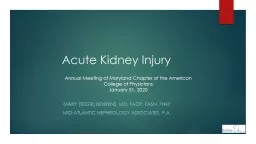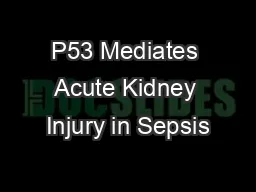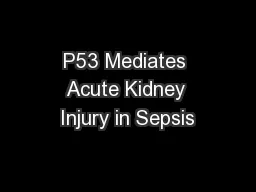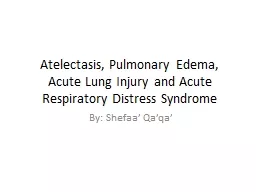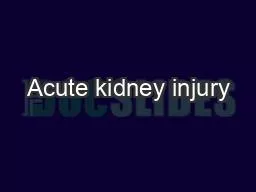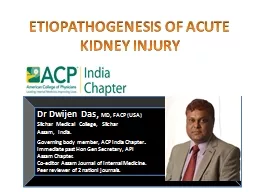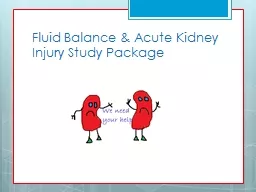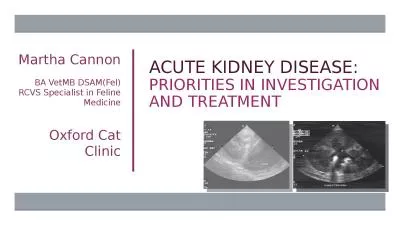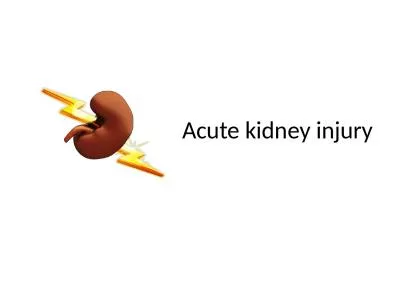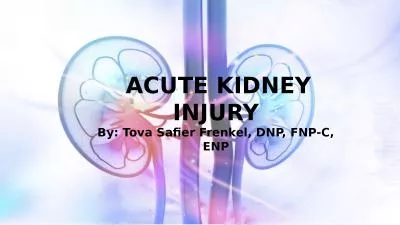PPT-Acute Kidney Injury Mary (tessie) Behrens, MD, FACP, FASN, FNKF
Author : numeroenergy | Published Date : 2020-11-06
Midatlantic nephrology associates Pa Annual Meeting of Maryland Chapter of the American College of Physicians January 31 2020 Agenda Definition Staging BioMarkers
Presentation Embed Code
Download Presentation
Download Presentation The PPT/PDF document "Acute Kidney Injury Mary (tessie) Behren..." is the property of its rightful owner. Permission is granted to download and print the materials on this website for personal, non-commercial use only, and to display it on your personal computer provided you do not modify the materials and that you retain all copyright notices contained in the materials. By downloading content from our website, you accept the terms of this agreement.
Acute Kidney Injury Mary (tessie) Behrens, MD, FACP, FASN, FNKF: Transcript
Download Rules Of Document
"Acute Kidney Injury Mary (tessie) Behrens, MD, FACP, FASN, FNKF"The content belongs to its owner. You may download and print it for personal use, without modification, and keep all copyright notices. By downloading, you agree to these terms.
Related Documents

